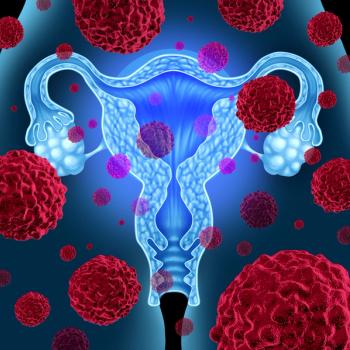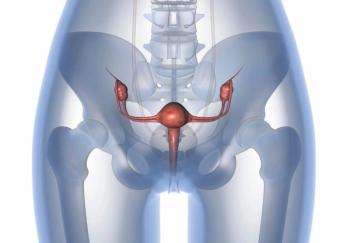
Oncology NEWS International
- Oncology NEWS International Vol 11 No 3
- Volume 11
- Issue 3
Low-Dose Amifostine May Prevent Platinum Neurotoxicity
NEW YORK-Repeated low-dose administration of amifostine (Ethyol) is being studied in a randomized, multi-center, community-based trial in an attempt to prevent neurotoxicity caused by platinum-based chemotherapy.David Alberts, MD, and Martee Hensley, MD, discussed the new study at the Ethyol Emerging Neuropathy Trial Investigator Meeting.
NEW YORKRepeated low-dose administration of amifostine (Ethyol) is being studied in a randomized, multi-center, community-based trial in an attempt to prevent neurotoxicity caused by platinum-based chemotherapy.
David Alberts, MD, and Martee Hensley, MD, discussed the new study at the Ethyol Emerging Neuropathy Trial Investigator Meeting.
How Amifostine Works
Dr. Alberts, professor of medicine, pharmacology, and public health, and associate dean for research at the University of Arizona College of Medicine and Arizona Cancer Center, Tucson, explained that amifostine is a targeted cytoprotectant for normal cells.
"Amifostine is a prodrug that is not active in vitro unless dephosphorylated to the sulfhydryl form, WR-1065, which undergoes oxidation to a symmetric disulfide, WR-33278, an extremely important cationic polyamine that protects DNA during chemotherapy and radiation therapy," he said.
Amifostine is generally not dephosphorylated by tumors because cancers tend to have very low levels of membrane-bound alkaline phosphatase, which is required to dephosphorylate the pro-drug. "There is a 250-fold difference in the amount of alkaline phosphatase on the cell membranes of normal human lung fibroblasts compared to a non-small-cell lung cancer (NSCLC) cell line," Dr. Alberts said (Figure 1).
As a result, he said, on normal cells, dephosphorylation produces WR-1065, "which is pulled into the cell and can absorb oxygen free radicals, neutralize the DNA-binding moieties of platinum-containing and alkylating agents, protect DNA against radiation damage, and induce DNA repair mechanisms, possibly by stripping away platinum adducts."
Dr. Alberts said that several different types of normal tissue could potentially be protected by amifostine against chemotherapy or radiation. The drug is FDA approved specifically to protect against nephrotoxicity from cisplatin (Platinol) in ovarian cancer and NSCLC patients, as well as to protect against radiation-induced xerostomia, he said.
There is some evidence of amifostine protection against hearing loss caused by cisplatin, he said. In the bone marrow, amifostine stimulates deep progenitor cells. "There is evidence of protection against doxorubicin-induced cardiotox-icity and mucositis," he noted.
Referring to a 1997 Cancer study by Budd et al, Dr. Alberts pointed out that amifostine demonstrated good activity against chronic carboplatin (Paraplatin)-induced thrombocytopenia, which he described as "a devastating problem when carboplatin is used in moderate doses for six or more cycles" (Figure 2).
Ongoing Study
Positive data from radioprotection and myelodysplastic anemia studies provided the rationale for the Monday, Wednesday, Friday low-dose amifostine schedule (500 mg thrice weekly) that Dr. Alberts and colleagues incorporated into the study design of their ongoing randomized, open-label, multicenter (over 30 sites), community-based trial of amifostine vs no treatment for platinum-induced peripheral neuropathy.
The protocol requires the evaluation of 1,000 patients for eligibility to obtain 400 evaluable patients (200 per arm) for the trial, which is powered to detect a 4-unit difference between the two study arms in functional assessment of cancer therapy-neurotoxicity (FACT-NTX) with 80% statistical certainty.
Accrual is open to patients who are currently being treated with a platinum-based regimen and who experience at least a 3-point drop in FACT-NTX total scores from baseline determinations. Exclusion criteria include other possible causes of neurotoxicity, such as alcoholism, diabetes, or peripheral vascular disease, and previous treatment with amifostine for peripheral neuropathy.
Patients are randomized to 12 weeks of amifostine or observation if they experience a 3-point drop in FACT-NTX score from baseline. The FACT-NTX is repeated prior to each cycle of platinum-containing therapy.
"We’re going to look at amifostine for 12 weeks vs no treatment for 12 weeks. The beauty of this study is that all patients have the opportunity to be treated ultimately with amifostine. The group of patients on the no-treatment arm after the 12 weeks will then be eligible for treatment with amifostine," Dr. Alberts said. "This is a study that takes advantage of giving treatment before and after a platinum agent. It is a unique study using the repetitive low-dose treatment."
Dr. Martee Hensley, assistant attending physician, Division of Solid Tumor Oncology, Department of Medicine, Memorial Sloan-Kettering Cancer Center, said that an assessment of quality-of-life endpoints was incorporated into the study design because "patients care about the symptoms from their disease and about the side effects of their treatment. Patients care about how they are coping with their illness emotionally, whether they are distressed, and whether they are able to get any enjoyment out of things they previously were doing."
She noted that both peripheral neurotoxicity and hearing loss can interfere with how patients function, what they can do, and whether they feel comfortable leaving home and interacting with other people.
"Many patients are very discouraged if dose reductions are needed, and unlike short-term toxicitieswhere we have great drugs for nausea and vomiting, for exampleneurotoxicity may be irreversible, so you may cure the patient but leave him or her debilitated," she said.
Dr. Hensley said that the FACT-NTX includes an 11-question neurotoxicity subscale with items such as, "I have trouble buttoning buttons. I have ringing or buzzing in my ears. I have discomfort in my hands. I have trouble walking."
She predicted that the FACT-NTX would be useful in detecting neurotoxicity, determining whether neurotoxicity symptoms improve or worsen over time, and determining whether these symptoms respond to treatment with chemoradioprotective agents, such as amifostine.
Articles in this issue
almost 24 years ago
Bush to Complete 5-Year Doubling of NIH Budgetalmost 24 years ago
CAD Accurate in Digital Imagesalmost 24 years ago
Campath-1H Safe and Effective in Refractory B-CLLalmost 24 years ago
Involved-Field RT Is Effective in Hodgkin’s Diseasealmost 24 years ago
FDA Approves Orfadin for Hereditary Tyrosinemia Type 1almost 24 years ago
Allovectin-7 Immunotherapy Active in Metastatic Melanomaalmost 24 years ago
HAART Ups Survival in Primary CNS Lymphoma Patientsalmost 24 years ago
DX-8951f/Gemcitabine Safe, Active in Advanced Solid Tumorsalmost 24 years ago
Pseudomonas aeruginosa Infections After Transplant Rare But Deadlyalmost 24 years ago
ODAC Recommends That FDA Approve Zometa for Bone MetastasesNewsletter
Stay up to date on recent advances in the multidisciplinary approach to cancer.





















































































